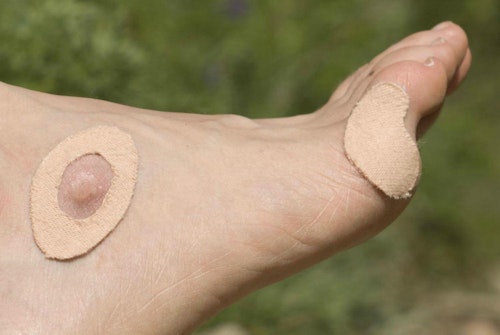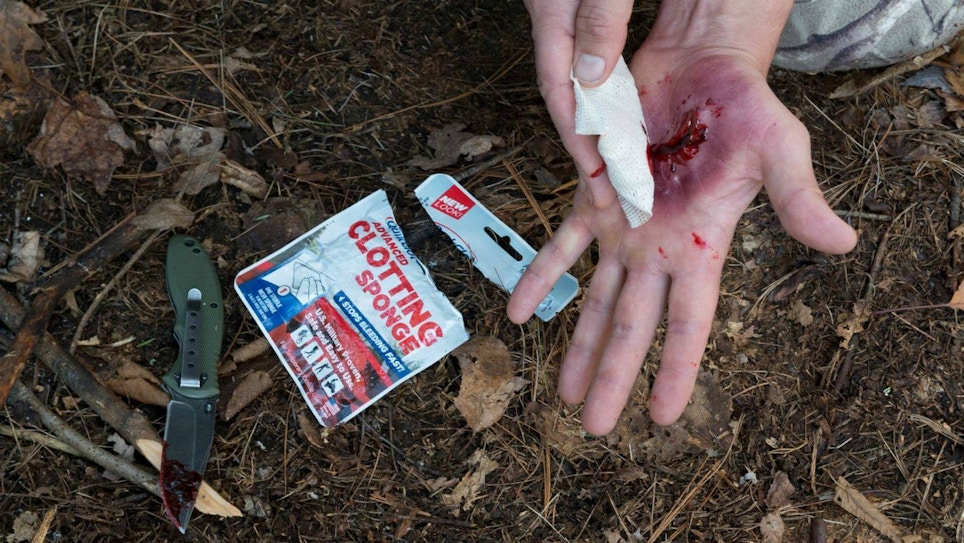Let’s face it: Hunting is potentially dangerous and accidents happen. Knives designed for field dressing animals and sharp broadheads can also cut you — badly. The actions you take immediately following an accident can have life or death consequences.
First-aid classes are often offered through local fire departments or Red Cross offices, and there are many books available on the subject. Take the time to learn basic first aid. Below are some guidelines to get you started.
Wounds and Bleeding
Bleeding must be stopped or your victim risks death. Approach this problem in progressions:
- First, apply direct pressure and elevate the wound.
- Only if bleeding continues, seek a pressure point on a major artery (groin or armpit), and apply pressure to slow blood flow to the affected limb.
- Consider tourniquets to be a last resort. Apply to “long bones” (like the femur). Lower extremity arteries run through the center of “twin bones” (like the tibia and fibula), making tourniquets ineffective.

Broken Bones
Any time a broken bone is accompanied by open wound(s), assume a compound fracture.
- Bone must be protected from infection at all costs. Cover it with the cleanest material available and avoiding touching the affected area. Immobilize the broken limb important. Splint the limb through upper and lower joints, above and below the break, using available material. Avoid materials that create a blood-blocking tourniquet.
- When splint materials aren’t available place padding between legs and use the good leg to stabilize the broken one.
- Shock is possible, so move the victim into shade and keep him warm.
Concussions
Any time loss of conscience occurs, a concussion’s possible. Uneven pupil dilation, strange behavior, and vomiting are sure symptoms. These victims need immediate help, but leaving them is risky. You may have to clear airways and help with breathing and seizures may follow.
- Turn victims on their side to keep airways clear after vomiting.
- If hemorrhaging is included, prop them to assuage bleeding.
- A loose turban of bandaging should be applied in case of skull fracture.
- If seizures follow don’t put sticks in the victim’s mouth, and especially not your fingers.
- Keep the victim’s chin up to maintain an open airway. If the victim’s neck’s broken a clear airway comes first in saving a life, but moving the victim to allow breathing can cause paralysis.
Dehydration, Heat Exhaustion and Stroke
A dehydrated person must be rehydrated slowly. A massive and sudden influx of fluids can cause vomiting that makes matters worse. Cold, clammy skin indicates heat exhaustion, while dry, hot skin is a sign of more serious heat stroke.
- Allow the person only a few swallows of fluid, waiting a couple minutes before allowing more.
- If it is heat stroke, the person must be cooled quickly. Pour liquids over the person and fan to lower brain temperature. Laying the victim in water is an option only if the water is not too cold. Cold water can induce shock. Work to enhance circulation by loosening clothing and belts.
- Once rehydrated the person will recover quickly.
Hypothermia and Frostbite
- A hypothermic person must be warmed as quickly as possible. Drink warm fluids and place the person in a sleeping bag with another person.
- Frostbite calls for rapid warming of the affected area. Immerse the extremity in 105-degree water (five degrees above body temperature). This causes extreme discomfort, but is necessary.
- If re-freezing is likely, don’t thaw the extremity, as exponential damage could result. After thawing, bandage affected areas, and avoid use.
Poisonous Bites
Snake and poisonous insect bites include rampant wives-tale remedies, such as cutting Xs and sucking poison. This is nonsense. Take these steps:
- Apply a constricting band (not tourniquet), and ice or otherwise cool affected areas.
- Try to identify the responsible snake or insect. This will help doctors administer the proper anti-venom.
- Keep the victim quiet and calm, reassuring the person as necessary. Many toxins include anxiety-causing agents.
Pack a First Aid Kit. Always.
The Sportsman 100 from Adventure Medical Kits (above) measures 7.5x6.5x2 inches and weighs 6.7 ounces. It’s small enough to pack on any backcountry bowhunt. This waterproof kit contains moleskin, medications, bandages and a trauma pad so you’re prepared to treat common injuries and illnesses. It also contains a first-aid quick guide (pamphlet) to help you treat everything from cuts to snake bites.
Choose a specific place in your daypack to carry a first-aid kit and never leave it behind. Just as it's important to always tell someone where you're hunting, and when you're expected back, and to carry a fully charged smartphone, it's vitally important to be prepared for accidents in the field.
The outdoors can kill you. Take precautions to avoid potentially dangerous or life-threatening situations. If you do find yourself trapped in a first-aid scenario, keep your wits and use you skills to bring someone home alive.







